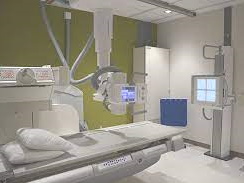
CGH Medical Center writes, “You may notice that we no longer shield patients during imaging exams. This [mean]s the lead apron that used to be put on you during an x-ray. The reason is, based on over 70 years of research, respected agencies in the radiology industry, announced revised recommendations, that patient shielding is no longer recommended for X-rays.”
According to the National Council on Radiation Protection and Measurements (NCRP) statement no. 13, on January 12, 2021, the NCRP recommended ending routine gonadal shielding during abdominal and pelvic radiography. Similarly, in April 2019, the American Association of Physicists in Medicine (AAPM) released a position statement, outlining reasons for limiting the routine use of fetal and gonadal shielding in medical imagining. This has since been endorsed by the American College of Radiology.
The purpose of radiological protection, including recommendations for shielding, is to reduce the likelihood of possible harm. In the 1950s, medical experts had less knowledge about how the X-ray radiation used in medical imaging affected our bodies. One concern was that the radiation might damage cells that could be passed along to future generations. Because of this concern, lead shields were often placed over patients’ reproductive organs during medical imaging exams.
“This is a big adjustment in the imaging community,” said Sarah Zigler, CGH Medical Center Radiation Safety Officer RT (R)(CT), CNMT. “It may take some time for the technologists, physicians, and patients to be completely comfortable with this change. In the end, it reduces radiation exposure which is a big win for everyone.”
The amount of radiation used in medical imaging has decreased over 95% since the 1950s. Better technology means that today’s medical imaging equipment can make high quality images, using only very small amounts of radiation.
Shields can interfere with other dose-saving features. X-ray equipment includes technology that makes sure just the right amount of radiation is used for the exam. Sometimes a shield can interfere with this technology, which can actually increase the amount of radiation from the exam.
Therefore, many imaging centers, including CGH Medical Center, have adopted the recommendation for ending shielding during imaging exams.
There are some situations in which shielding may be used. Your Radiologic Technologist may still wear a shield while performing your imaging exam. A parent or guardian of a pediatric patient being imaged may be asked to wear a shield. If a patient, parent, or caregiver requests a shield be used, it may be permissible when it will not interfere with the purpose of the examination.
As always, please talk to your Technologist if you have any questions, to make sure you understand the risks and benefits.
For more information on CGH Medical Center’s Diagnostic Imaging Services, please visit https://www.cghmc.com/services/imaging.